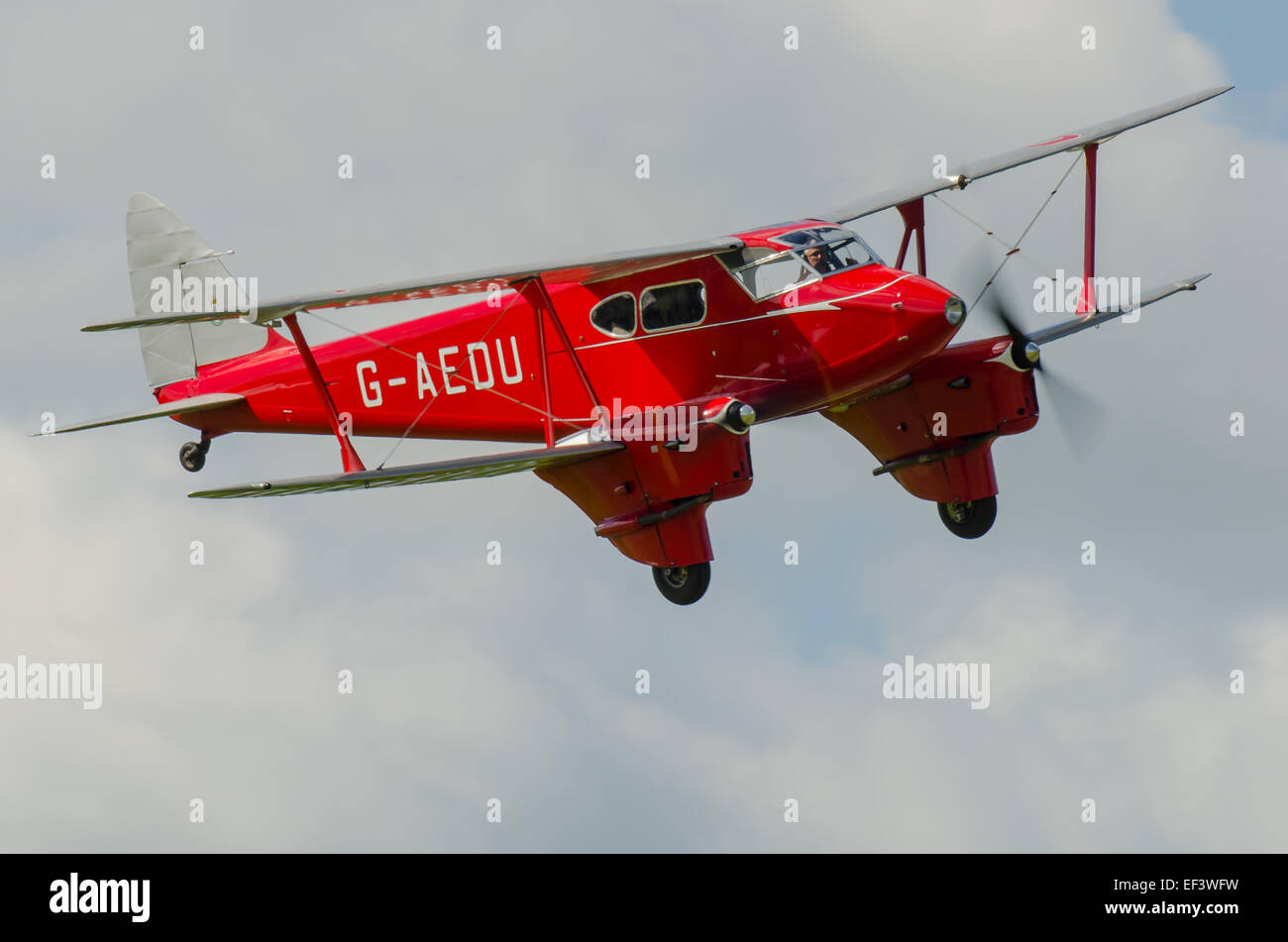The de Havilland DH.90 Dragonfly was a 1930s British twin-engined luxury touring biplane built by the De Havilland Aircraft Comp

Image details
Contributor:
Avpics / Alamy Stock PhotoImage ID:
EF3WFWFile size:
36.7 MB (450.2 KB Compressed download)Releases:
Model - no | Property - noDo I need a release?Dimensions:
4400 x 2916 px | 37.3 x 24.7 cm | 14.7 x 9.7 inches | 300dpiDate taken:
31 August 2014Location:
Shoreham, West Sussex, UKMore information:
The de Havilland DH.90 Dragonfly was a 1930s British twin-engined luxury touring biplane built by the De Havilland Aircraft Company at Hatfield Aerodrome. The Dragonfly shared a clear family resemblance with the Dragon Rapide, but was smaller and had higher aspect ratio, slightly sweptback wings. The lower wing had a shorter span than the upper, unlike the DH.89, and the top of the engine nacelles protruded much less above its surface because the fuel tank had been moved to the lower centre section. Structurally, too they were different: the Dragonfly had a new preformed plywood monocoque shell and strengthened fuselage. It was designed as a luxury touring aircraft for four passengers and a pilot, with provision for dual controls. The first aircraft, G-ADNA, first flew on 12 August 1935. The Dragonfly achieved maximum performance on low power, by using the new construction methods developed for the de Havilland Comet racer, and therefore was expensive to buy (£2, 650). In modern terms, it was an executive transport, aimed at wealthy private individuals, often via the companies they owned. The first delivery was made in May 1936. Some 36 new-build Dragonflies went to private and company owners, about 15 to airlines/air taxis and three to clubs. Two each went to the Danish and Swedish air forces, and the Royal Canadian Mounted Police had four to combat rum-runners. Production ended in 1938. By 1939, several aircraft had moved from private to commercial use.They were used as air taxis between the various London airports, and also as Army Cooperation night flying trainers. Western Airways of Weston-super-Mare Airport used its Dragonfly on a scheduled service via Birmingham to Manchester. G-AEDU (pictured) has been registered in the United Kingdom since 1992, owned by the Norman Aeroplane Trust.Originally delivered to Angola in 1937, it flew as CR-AAB and later as ZS-CTR in South Africa.It was exported to the United States in 1983 as N190DH but it was returned to England.